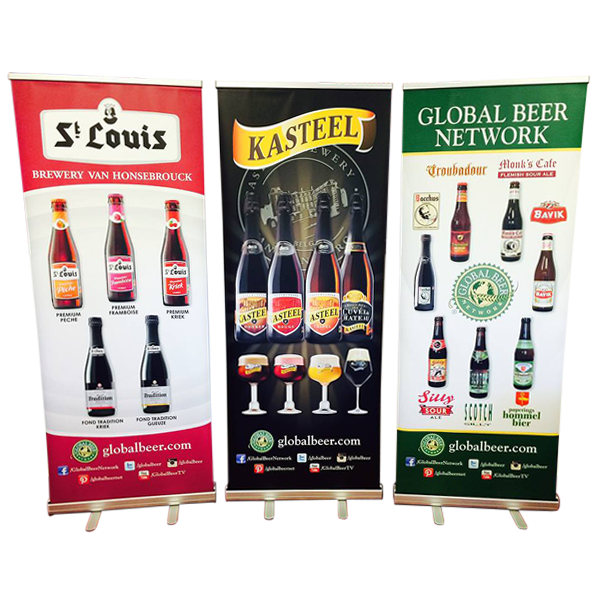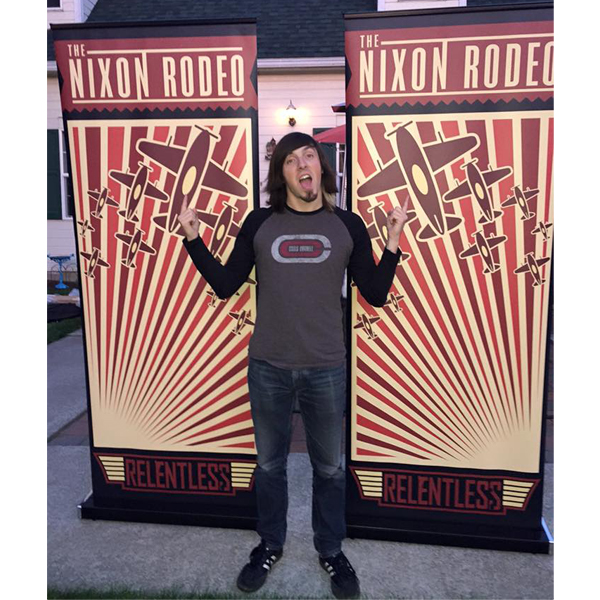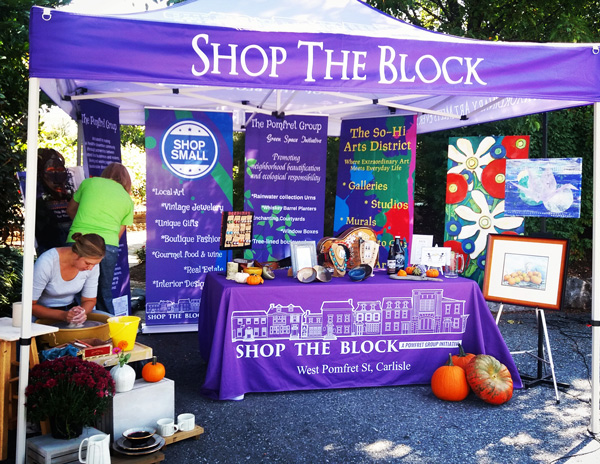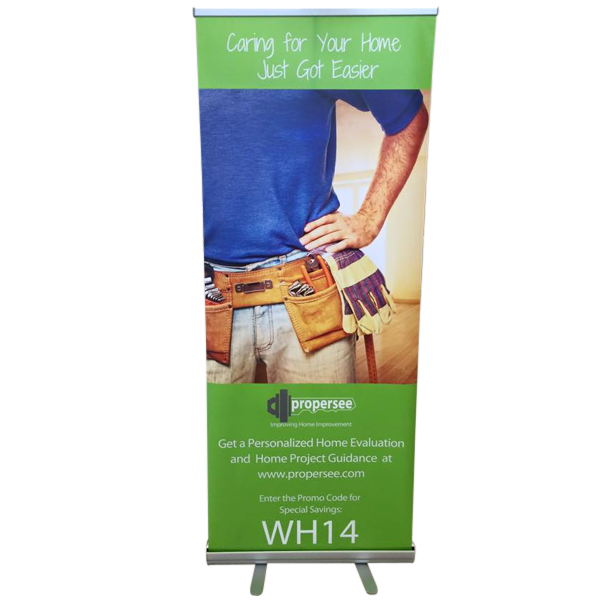10 Tips for Designing the Best Roll Up Banner
When it comes to advertising your products at a trade show, design retractable banners to use in your booth. It is one of the most important tools an exhibitor can have their kit when they go to a trade show. You might be wondering why:
Put simply, they serve as fire-and-forget advertising. You can put them in places you know people are going to congregate (like in the line at a cash register). Then watch them take in your message as they wait for the line to move. Because of this, a roll up banner is best used as an addition to your point-of-contact or point-of-sale material. However, that means that getting the right design and right amount of information on your banner is incredibly important when it comes to generating the impact you want among your customers. We’re here with some tips on how to design a roll up banner that generates that impact.
Related: The Seven Elements of Good Design
Tips For How To Design A Roll Up Banner
1. Keep your logo at the top.
Use the top of your roll-up banner to display your company’s logo and any pertinent information. Why? Often, it’s the first place that new viewers will look. Follow this down with your main message at eye level. It’s most likely to grab someone’s attention as they walk past it.
2. Think top-to-bottom, left-to-right.
We’re all taught to read from top to bottom and left to right when we’re in school: your consumers are no different. Keep this in mind as you start laying out the flow of information on your banner. Keep it to relevant information only – more information can be provided by your sales team or by using a tabletop banner or backdrop.

3. Make sure you’re using high-quality images.
Everyone wants to use images on their banners: it’s practically why banners were invented. If you want to use any kind of print-ready images on your banners, make sure they’re saved as CMYK (Cyan, Magenta, Yellow, Black – as opposed to RGB) and the resolution is set to 300 dots per inch. Not sure what all of that means? Check out our post on image requirements and why they matter.
4. Color is your friend.
Colors can help you stand out at an exhibition or trade show, but you have to be careful about it. The colors you use have to work well together, tie in with your corporate colors and overall support your logo. To support your logo best, you have to be aware of the impact that your background color is going to have on how people perceive your logo: for example, black and grey are “serious” colors, while bright colors like red and orange can be used to grab a customer’s attention and draw them in. If you’re unsure what color scheme to pick, or which colors work together, sites like Adobe Color CC are a great way to figure that out.
5. Make use of text and spacing.
Typography is the arrangement of letters and type in a way that’s both readable and artistically appealing. Consider not only the type you’re going to use on your banner, but also the type that you’ve already used, especially in your logo. How you design and use the various typefaces available to you is one of the more important things when it comes to visual and graphic design. Typography can make or break a whole project, and it’s a field that comes with its own set of errors that beginners might not be aware of.
6. Commit to a design aesthetic.
Aesthetics is the study of how our brains interpret things as being beautiful or ugly. If you want your customers to identify with your brand and recognize your products, you need a design aesthetic. Daniel Schwarz of Creative Market lays out what on earth a design aesthetic actually is, and why you’d need one. Once you’ve read through that, it’s time to actually start establishing a design aesthetic for your brand, if you haven’t already.

7. Choose the banner size that’s right for you.
Our banners range in size from the 13-inch tabletop retractable banner all the way up to the 6.8-foot retractable banner. Additionally, we carry an extra large retractable backdrop that can expand to over 10 feet high while still easily fitting into a trade show booth at only 5.5 feet wide.
The size of banner you need depends entirely on your advertising needs. If you need something that can be used to advertise all by itself, go with the larger size. However, if you’re using your roll up banner as a complement to other advertising products, it’s best to go for smaller sizes.
8. Pair it with other advertising products.
Your roll up banner shouldn’t be the only product you use when it comes to advertising to customers. Rather, you need a whole booth that’s designed to extoll your presence at the event. Items like table covers, pop up displays and even promotional seating can go a long way toward livening up your (and your customers’) trade show experience.

9. Experiment.
Not sure which design to go with? Experiment! Make copies of the designs you like and set them out throughout the trade show you’re attending. Because you have a bunch of different designs, you can then track their effectiveness in bringing new visitors to your booth in order to see which design wins out overall.
10. Have a plan in place to measure effectiveness.
We go over this in a little more detail in our post on maximizing your ROI at a trade show, but you can also have a separate plan to measure the return on investment of just your roll up banners. Here are some things to review when it comes time to tear down after the trade show.
Look at how it was placed. Did it generate a good amount of foot traffic? Could it have been placed in another area to benefit from the maximum amount of footfall possible?
Is all of your marketing collateral consistent with what’s displayed on the banner? Do your brochures match up? How about your employees’ sales pitches?
How many inquiries did it generate? Were people asking about your products because they saw your banners?
We hope these tips have given you a pretty solid start when it comes to how to design a roll up banner, but we’d like to know what you think, too: how do you make your banners an effective sales tool?
Let us know on Facebook, Twitter, or in the comments below.



